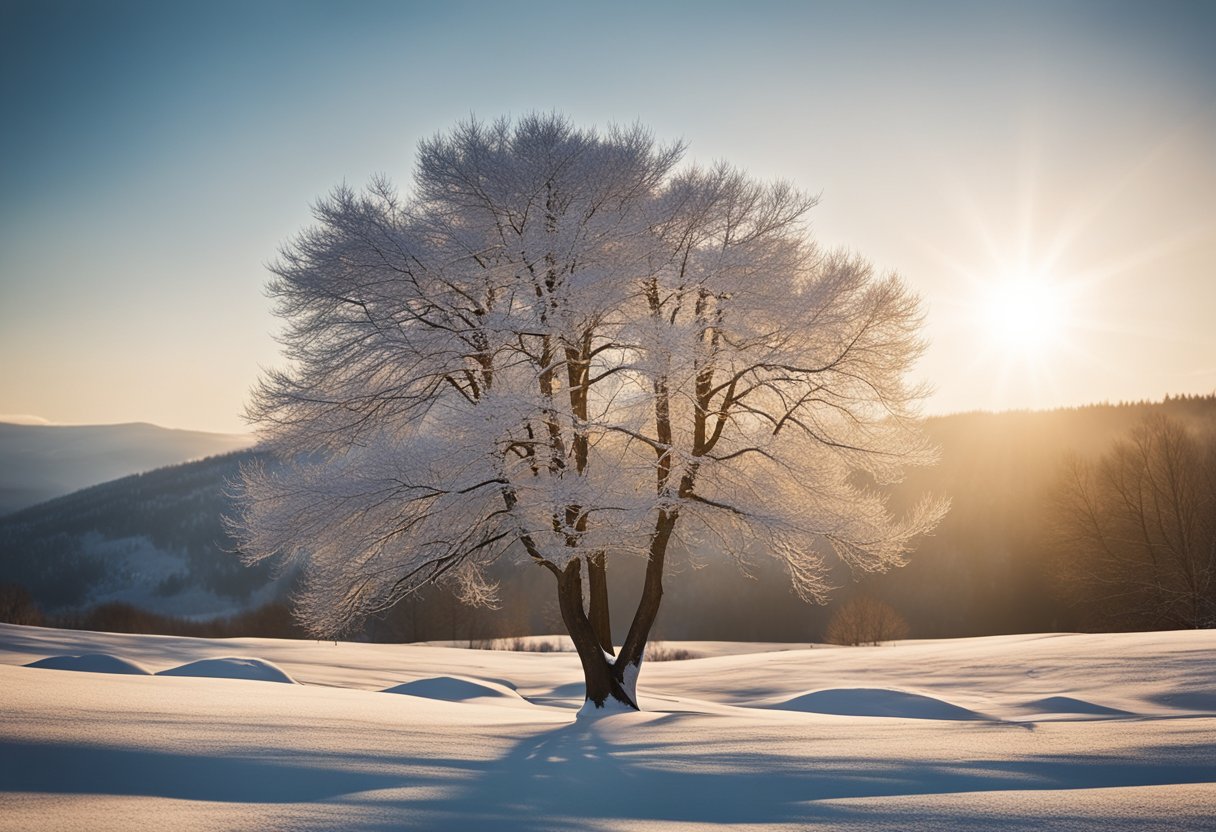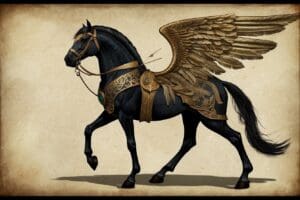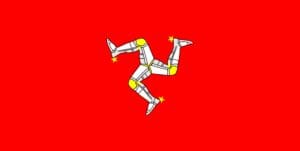Imbolc to Samhain: Discover Traditional Celtic Festivities Through the Year

Updated On: April 22, 2024 by Maha Yassin
Imbolc marks the beginning of the Celtic Wheel of the Year, a calendar rich with seasonal celebrations and festivals that reflect the deep connection the Celts had with the earth’s cycles. With roots stretching back through the ages, this cyclical calendar encompasses eight significant festivals that map the turning of the seasons, starting with Imbolc in early February, which signifies the reawakening of the land and the early stirrings of spring. These Traditional Celtic Festivities are not just historical observances but also represent a continuous thread of tradition that links the past to the present, celebrating nature’s rhythms that are still relevant in our modern lives.
As the wheel turns towards Samhain, the last festival of the cycle, we encounter the end of the harvest season and the entrance into the darker half of the year. Recognised by many as the Celtic New Year, Samhain is a time when the veil between worlds is said to be at its thinnest, allowing for a deeper connection with the spiritual realm. It’s celebrated on 1 November, a festival of remembrance and reflection, often involving honouring ancestors and spirits before us. Through the passage of the Wheel of the Year, we not only keep the traditions and practices of the Celts alive but also embrace the timeless themes of life, death, and rebirth that are universal to all human experience.
The Significance of the Celtic Wheel of the Year
As we explore the Celtic Wheel of the Year, we understand it as a vital aspect of Celtic culture. It represents the annual cycle of seasonal festivals that honour the rhythm of nature and the significant agricultural milestones.
Key Components
- Solstices and Equinoxes: Marking the quarter days, these are pivotal turning points in the cycle, with the solstices celebrating the sun at its peak and nadir and the equinoxes reflecting balance when day and night are equal.
- Cross-quarter Days: Positioned between the solstices and equinoxes, these seasonal festivals highlight the midpoints of the seasons and are essential to the Celtic spirit and tradition.
The Wheel includes eight festivals, which are as follows:
- Samhain: Celebrated 1 November, heralding the Celtic New Year and the beginning of winter.
- Yule: The Winter Solstice around 21 December, honouring the sun’s rebirth.
- Imbolc: Around 1 February, it signifies the land’s awakening and the sun’s growing power.
- Ostara: The Spring Equinox around 21 March, celebrating new life and balance.
- Beltane: On 1 May, it marks the onset of summer with themes of fertility and fire.
- Litha: The Summer Solstice, around 21 June, represents the sun’s strength.
- Lughnasadh: 1 August, the beginning of the harvest.
- Mabon: The Autumn Equinox around 21 September, a time for giving thanks.
These festivals are seasonal markers and hold deep spiritual significance, reflecting the intertwining of human life with nature’s cycles. As followers of these traditions, we attune ourselves to the ebb and flow of the earth’s energies, using these times for reflection, celebration, and honouring the land.
The Wheel of the Year is thus a guide for us, offering a way to live harmoniously within the cycles of nature, acknowledging the changing seasons and their impact on our lives and the environment.
Imbolc: Rekindling the Light
As we celebrate Imbolc, we embrace the resurgence of light and warmth in our world. This is a time of purification and revitalisation, heavily associated with the goddess Brigid, where the kindling of fires represents the returning power of the sun.
Fire Rituals and Brigid’s Influence
Imbolc is indelibly connected to fire, symbolising the rebirth of the sun. Traditional fire rituals honour the goddess Brigid, the beacon of hope and renewal during this period. We light candles to manifest her warmth and create sacred flames that cleanse our surroundings, signifying both spiritual and physical purification. These fire rituals are not only acts of devotion but also means to rekindle our inner spark as we move from winter’s shadow.
Symbols and Practices for Renewal
The symbols of Imbolc carry profound meanings of rejuvenation. We often weave Brigid’s cross from rushes, placing them in our homes to protect her. Seeds symbolise the upcoming spring—they are selected and blessed in anticipation of the life they will soon sprout. Moreover, incorporating candles in our observance stands for our journey toward the light. These actions are practical expressions of our readiness to emerge from the introspective winter into the future growth and opportunities.
Ostara and Beltane: Spring Equinox to May Day
As we welcome the vernal equinox, we celebrate Ostara—the festive time marking the balance of day and night. This period paves the way for Beltane, encapsulating the quintessence of fertility and the jubilant embrace of spring. Here, the cycle of rebirth in nature is venerated, and traditions rich in symbolism come to the fore.
The Dawn of Spring and Fertility Celebrations
Ostara, occurring around the spring equinox, symbolises renewal and rebirth. It is a moment when light equals darkness; thereafter, the days begin to outlast the nights. We honour nature’s revival, observing budding flora and warmer soils. The holiday shares its name with the Germanic goddess of spring and dawn, reflecting fertility and new beginnings themes. Eggs, representing potential life, and hares, a symbol of fecundity, are often associated with Ostara.
Beltane celebrated on 1 May, heralds the high point of spring and the coming summer. It’s a fire festival, where the lighting of Beltane fires signifies purification and the protective powers of light. The bountifulness of the earth is at its peak; blossoming gardens and verdant fields stand as a testament to nature’s full awakening. This day embodies the fertility of the land and the celebration of growth.
Maypole Dancing and Beltane Fires
The tradition of maypole dancing is a striking feature of Beltane festivities. A tall pole, representing the union of earth and sky, is adorned with ribbons and flowers. We weave patterns around the maypole, entwining the ribbons as a metaphor for the intertwining of lives and the community. This joyful dance is a captivating expression of life’s continuity and our connections within the year’s cycle.
Beltane fires serve as focal points of community gatherings, where the flames cleanse the old and ignite the passions for new endeavours. Leaping over the fire is customary to bring fertility and good fortune. The bright blaze of Beltane marks our transition toward summer abundance while we revel in the triumph of warmth over the remnants of cold.
Litha to Lughnasadh: Celebrating the Height of Summer
In the warmth of high summer, we celebrate two pivotal points of the Wheel of the Year: Litha, the summer solstice, and Lughnasadh, the beginning of the harvest season.
Summer Solstice and the Power of the Sun
The summer solstice, known as Litha amongst many practitioners, heralds the longest day of the year. This is when the sun is at its most powerful, and nature is lush and full of life. Celebrations of Litha focus on the strength and energy of the sun and its role in bringing prosperity and growth to the land. Bonfires are a traditional element of Litha festivities, symbolising the sun’s potency and lighting up the longest nights.
The First Harvest and the God Lugh
As we move forward from Litha, the Wheel turns to Lughnasadh, typically celebrated on the 1st of August. Lughnasadh, or Lammas, marks the first harvest, especially grains. It’s a period of giving thanks for abundance and recognising the early yields of the planting cycle. The festival is named after the Celtic god Lugh, associated with craftsmanship and skill. It’s a time for feasting on the first fruits and bread, showcasing handicraft, and engaging in athletic competitions honouring Lugh’s talents.
Mabon: The Autumn Equinox and the Second Harvest
As we observe the Celtic Wheel of the Year, Mabon marks a significant point of celebration. Occurring on the Autumn Equinox, typically around 22 September, it’s a time when we honour the balance of light and dark. This day, when daylight and night are of equal length, symbolises equilibrium and reminds us of the need for harmony in our lives.
Mabon is also known as the Second Harvest, following the First Harvest of Lammas. It’s a period of thanking the earth for its bounties and acknowledging the culmination of the growing season’s efforts. Our tables and hearts are gratified as we harvest fruits, vegetables, and grains, storing abundance for the colder months ahead.
Here’s what we typically do to celebrate Mabon:
- Reflection: We contemplate the past season’s work and our achievements.
- Feasting: A celebratory meal with local produce, bread, and wine features prominently.
- Altar Decoration: We decorate our altars with symbols of the season, like apples, pomegranates, and vines.
- Balance Meditation: As day and night are equal, so we seek balance in our personal lives through meditation.
Mabon calls for a moment to pause and give thanks, to recognise our achievements and the beauty of nature’s cycles. It’s a point in the year for us to embrace the oncoming darkness of winter with a joyous heart, filled with the memories of summer and the anticipation of Yule to come.
Samhain: The Celtic New Year and the Veil Between Worlds
As we approach Samhain, the anticipation in the pagan and witch communities grows, marking a time when the veil between worlds is at its thinnest and the start of the darker half of the year begins.
Honouring the Dead and Welcoming the Dark Half of the Year
Samhain is deeply rooted in the ancient tradition of honouring ancestors. It is believed that on this night, the boundary dissolves between the physical world and the afterlife, allowing spirits to interact with the living. Celebrations often involve lighting bonfires, a practice once thought to guide the departed souls and protect against evil spirits. We also set places at dinner tables or leave offerings to welcome the spirits of our ancestors, embracing their guidance and wisdom as the night unfolds.
Halloween and the End of the Harvest Season
Samhain coincides with the end of the harvest season and the beginning of winter. We observe this change in seasons as a time of both completion and transition, where the last crops are gathered, and we prepare for the winter months. The festival later evolved into Halloween, retaining many elements, such as costumes and trick-or-treating. These customs stem from the need to protect oneself from the spirits or faeries that roam freely during Samhain, which aligns with our modern understanding of the Halloween tradition.
During this period, we recognise witches and their craft as integral to the celebrations, often seeing an increase in divination practices to seek guidance for the coming year. The legacy of Samhain as an important pagan holiday continues in our current observances, ensuring the spirit of the season remains alive and vibrant.
Yule: Winter Solstice and the Rebirth of the Sun

Each year, as we reach the depth of winter, Yule marks a significant point on the Wheel of the Year. This ancient festival celebrates the winter solstice, typically between 20 and 23 December, and heralds the sun’s return after the shortest day and longest night.
In times past, our ancestors understood the significance of the solstice, observing it as a time of rebirth and renewal. The returning light was a cause for celebration, symbolising hope in the darkness, and so Yule became a festive milestone rooted in Norse and Germanic traditions.
| Yule Customs | Origins |
|---|---|
| Log Burning | Germanic Tribes |
| Sun Worship | Norse Mythology |
| Midwinter Feasting | Various European Cultures |
Today, we keep the spirit of Yule alive through various customs. We gather to share food and drink, much like old feasts. Lights and decorations echo the desire to bring warmth and brightness into our lives. Traditionally, a Yule log is burned to signify the sun’s warmth, and evergreens adorn our homes as a reminder of life’s persistence through the cold.
As the celebration of Yule encompasses the themes of rebirth and the rejuvenating power of the sun, we embrace this time to rest and reflect. It’s a season to gather with loved ones, honour the cycles of nature, and prepare for the burgeoning days ahead with a sense of renewal and anticipation.
Celtic Traditions and Mythology
Within the rich tapestry of Celtic culture, we find a profound connection to the natural world, woven together through myth and legend. The Celtic Wheel of the Year celebrates significant seasonal markers, with festivals such as Imbolc and Samhain holding particular importance.
- Imbolc, celebrated on 1 February, heralds the onset of spring. It is traditionally associated with the goddess Brigid, symbolising new beginnings and fertility. Rituals often include the lighting of fires and the crafting of Brigid’s crosses. These customs honour the goddess’s association with the hearth and home.
- Moving through the year, we reach Samhain from 31 October to 1 November. It marks the end of the harvest season and the start of winter. Samhain is a time for remembering the deceased and contemplating the mysteries of life and death. Ancient belief surrounds this festival, with the veil between the living and the spirit world considered thinnest on this night.
These festivals are not mere historical footnotes; they represent the living Celtic lore, with narratives of gods and goddesses such as the mighty Dagda or the Morrigan, the goddess of war, influencing celebrations and seasonal observances.
Legends passed down through generations tell us of heroic deeds and epic battles, reflecting the values and beliefs of the Celtic people. These stories, rich in metaphor and symbolism, provide a deeper insight into the Celtic worldview, emphasising themes such as honour, bravery, and the cyclical nature of life.
Our understanding of these traditions and mythologies enriches our appreciation for Celtic heritage and illuminates the influence they continue to have on contemporary practices and beliefs.
Rituals and Symbols Across the Wheel of the Year
The Wheel of the Year is an integral aspect of various pagan traditions, encapsulating a cycle of festivals celebrating the seasons’ change. As we honour this sacred wheel, we recognise the profound connection between the elements—fire, air, water, earth, and ether—and our rituals.
Imbolc heralds the awakening of the land. Prominent symbols include Brigid’s cross and candles, embodying the returning light. Rituals often involve the lighting of fires, signifying the rebirth of the Sun.
Beltane is a joyous festival where maypoles represent the union of the divine feminine and masculine. Fire again plays a crucial role, with bonfires lit to symbolise fertility and purification.
Lughnasadh, the first of the harvest festivals, incorporates bread as a symbol of the Earth’s bounty. We give thanks through feasts and might craft corn dollies to honour the spirit of the grain.
Samhain is deeply rooted in remembrance, marked by the lighting of candles and homage to the ancestors. The cauldron, symbolising transformation, is prevalent, indicating the passage between worlds.
Our rituals often utilise natural elements to balance and ground our celebrations:
| Element | Ritual Usage |
|---|---|
| Fire | Bonfires, candle lighting |
| Air | Incense, breathwork |
| Water | Anointing, libations |
| Earth | Planting seeds, burying offerings |
| Ether | Meditation, invocation of spirit |
By embracing these symbols and elements, we maintain a deep respect for our environment, aiming to leave no trace, adhering to principles of sustainability and balance. Our celebrations are diverse, reflecting the rich tapestry of traditions and the constancy of change.
Traditional Celtic Festivities and Pagan Communities
In contemporary times, our pagan and Wiccan communities actively celebrate the Wheel of the Year, revitalising ancient Celtic traditions with a sense of spirituality and connection. These festivals foster a community spirit and mark the changing seasons and agricultural cycles with reverence and joy.
For instance, we observe Imbolc on 1 February, a time to welcome the impending spring and celebrate new life, often involving candle-lit processions and honouring the goddess Brigid. As we progress through the year, Beltane, occurring on 1 May, centres on fertility and the bursting vivacity of spring, with maypole dances and the lighting of bonfires.
Lughnasadh, celebrated around 1 August, is our first harvest festival, where we give thanks for the bounty of crops, and Samhain, from 31 October to 1 November, honours the ancestors and the harvest’s end, with many of us believing the veil between worlds is thinnest at this time.
- Modern Pagan Holidays:
- Imbolc: Renewal, Beltane: Fertility
- Lughnasadh: Gratitude, Samhain: Remembrance
Our celebrations are rich and varied, reflecting the diverse nature of pagan beliefs. In embracing these holidays, we strengthen our connection to the Earth’s rhythms and each other. We often gather in circles or local community groups, and festivities can include rituals, feasting, music, and storytelling.
Within our local and online communities, Wiccans and pagans find solidarity in shared values and traditions. This reawakening of ancient practices in modern times underpins a spirituality that’s both individual and collective, rooted in the deep human need for connection to nature and the cycles of life.
Frequently Asked Questions
In exploring the Celtic Wheel of the Year, we often encounter inquiries about its key festivals and practices deeply rooted in Celtic tradition. These festivals mark the changing seasons and agricultural cycles, with vibrant customs celebrating the enduring connection between people and the natural world.
What are the key festivals included within the Celtic Wheel of the Year?
The Celtic Wheel of the Year includes eight festivals: Imbolc, Ostara, Beltane, Litha, Lughnasadh, Mabon, Samhain, and Yule. These festivals are evenly spaced throughout the year and linked to the solar and agricultural cycles.
How is Imbolc traditionally celebrated in Celtic cultures?
Imbolc, held on 1 February, traditionally celebrates the early signs of spring and the return of light. Celebrations may include lighting candles, making Brigid’s crosses, and performing rituals to honour the goddess Brigid, which are associated with fire, craftsmanship, and inspiration. It is a time for purification and the welcoming of new beginnings.
What represents the beginning of the pagan year in Celtic tradition?
The pagan year traditionally begins with Samhain, which falls on 1 November. It is considered a time when the veil between the worlds is thinnest, allowing communication with the ancestors. This festival marks the end of the harvest and the onset of winter‘s darker half.
Can you explain the significance of Samhain in the Celtic calendar?
Samhain holds profound significance as it symbolises the end of the growing season and the beginning of winter. It is a time to honour the dead, reflect on the past year, and prepare for the coming cold months. Samhain is celebrated with bonfires, feasting, and divination practices.
What traditions are commonly observed during Mabon in the Celtic Wheel?
Mabon, observed around 21 September, is the autumn equinox and a time of balance between day and night. Traditions during Mabon include giving thanks for the harvest, sharing food, and preparing for the balance of light and darkness. It’s a celebration of abundance and gratitude.
How do modern pagans integrate the Wheel of the Year into their practices?
Modern pagans often observe the Wheel of the Year by following the cycle of festivals, aligning their spiritual practice with the seasonal energies. These celebrations may involve rituals, feasting, and community gatherings to honour nature’s rhythms and foster a deeper connection to the Earth and its cycles.






